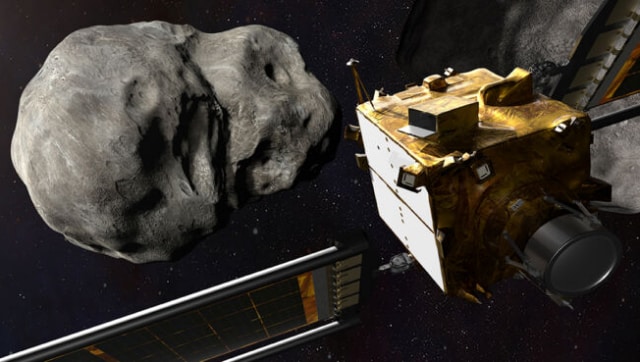
NASA’s DART Mission a huge success, has successfully altered asteroid’s orbit by about 10 metres- Technology News, Firstpost
The Linked PushOct 12, 2022 09:30:59 IST
CAPE CANAVERAL, Florida: A spacecraft that plowed into a smaller, harmless asteroid hundreds of thousands of miles away succeeded in shifting its orbit, NASA reported on Tuesday even though announcing the results of its preserve-the-planet exam.
The area agency attempted the take a look at two months in the past to see if in the long term a killer rock could be nudged out of Earth’s way.

NASA’s Dart mission has altered the orbit of the Dimorphos mini asteroid by about 10 metres or so. Picture Credit history: NASA
“This mission reveals that NASA is making an attempt to be completely ready for whatever the universe throws at us,” NASA Administrator Bill Nelson claimed in the course of a briefing at the place agency’s headquarters in Washington.
The Dart spacecraft carved a crater into the asteroid Dimorphos on Sept. 26, hurling debris out into place and making a cometlike path of dust and rubble stretching various thousand miles. It took consecutive nights of telescope observations from Chile and South Africa to figure out how a lot the impression altered the route of the 525-foot (160-meter) asteroid close to its companion, a substantially bigger place rock.
Just before the effects, the moonlet took 11 hrs and 55 minutes to circle its dad or mum asteroid. Scientists experienced predicted shaving off 10 minutes, but Nelson explained the impact shortened the asteroid’s orbit by 32 minutes.
“Let’s all just form of get a minute to soak this in … for the very first time at any time, humanity has changed the orbit” of a celestial overall body, noted Lori Glaze, NASA’s director of planetary science.
Apollo astronaut Rusty Schweickart, a co-founder of the nonprofit B612 Foundation, committed to guarding Earth from asteroid strikes, reported he’s “clearly delighted, no dilemma about that” by the success and the attention the mission has brought to asteroid deflection.
The team’s scientists reported the volume of particles seemingly performed a purpose in the consequence. The affect may possibly also have left Dimorphos wobbling a bit, reported NASA application scientist Tom Statler. That may possibly have an affect on the orbit, but it will by no means go again to its authentic spot, he observed.
The two bodies at first have been presently a lot less than a mile (1.2 kilometres) aside. Now they’re tens of yards (meters) nearer.
Neither asteroid posed a danger to Earth — and nevertheless really do not as they go on their journey all over the sunlight. That’s why scientists picked the pair for this all-vital dress rehearsal.
Planetary defence gurus choose nudging a threatening asteroid or comet out of the way, specified a long time or even a long time of lead time, somewhat than blowing it up and making various parts that could rain down on Earth.
“We definitely need to also have that warning time for a technique like this to be efficient,” reported mission leader Nancy Chabot of Johns Hopkins University’s Applied Physics Laboratory, which built the spacecraft and managed the $325 million mission.
“You’ve obtained to know they are coming,” added Glaze.
Introduced very last year, the vending device-dimensions Dart — small for Double Asteroid Redirection Examination — was ruined when it slammed into the asteroid 7 million miles (11 million kilometres) away at 14,000 mph (22,500 kph).
“This is a massive feat, not only in acquiring the initially step in quite possibly staying in a position to safeguard ourselves from long run asteroid impacts,” but also for the variety of photos and info gathered internationally, Daniel Brown, an astronomer at Nottingham Trent College in England, claimed by way of electronic mail.
Brown also reported that it is “particularly exciting” that the particles tail can be viewed by newbie skygazers with medium-sizing telescopes.
Team experts cautioned more do the job is desired to not only detect a lot more of the numerous area rocks out there but to confirm their make-up — some are stable, even though other folks are rubble piles. Scouting missions may be necessary, for instance, ahead of launching impactors to deflect the orbits.
“We should not be too eager to say one particular take a look at on one particular asteroid tells us accurately how every other asteroid would behave in a identical condition,” Statler reported.
Even so, he and other folks are rejoicing more than this 1st exertion.
“We’ve been imagining this for a long time and to have it eventually be genuine is truly really a thrill,” he said.
